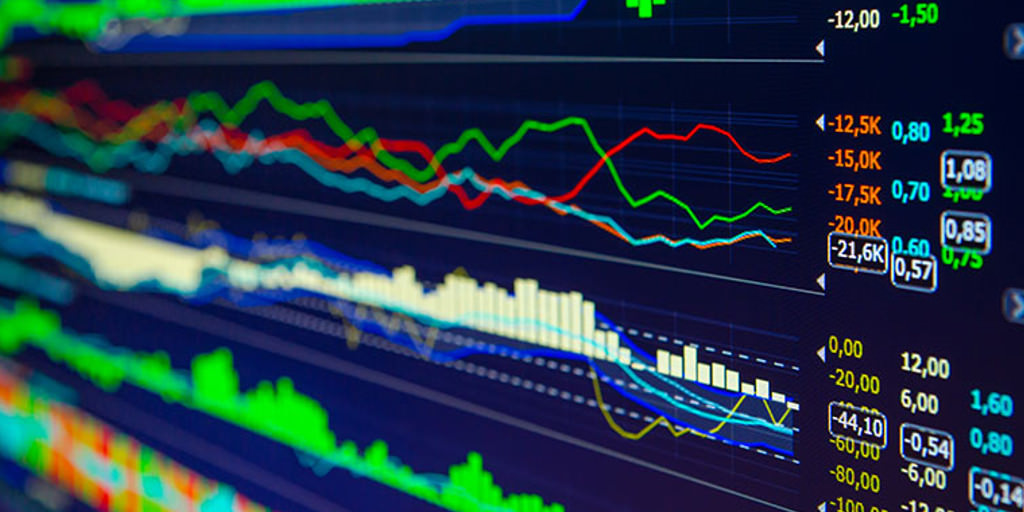Intraday Trading and Sideways Markets: Survival Tips
June 18, 2019

Intraday Trading is a widely practiced approach. It is for a whole series of reasons. For example, it allows you to avoid the application of overnight rates with relative ease and without side effects, which are generally responsible for significant losses. Secondly, it is halfway, in terms of the overall complexity / profit prospect ratio, between Scalping and Swing Trading.
However, Intraday Trading also has its critical elements. One concerns the lateral phases, which technically can create more than a few headaches even for experienced traders. In this article, we address the problem and try to offer a solution.
The Imperative of Intraday Trading
Those who practice Intraday Trading generally have only one great imperative. That of following the trend. The view of the market, in fact, is too circumscribed, the price changes too frantic to think of going against the trend without paying the consequences. From a purely theoretical point of view, the principle that underlies (or should underlie) any Intraday trader is simple: almost trivial: when the price goes down, you sell; when the price goes up, you buy.
In short, trend following is the only approach that, without too many side effects, is capable of guaranteeing good profit prospects and a manageable risk.
However, this implies that the Intraday trader must know when to stop. That is, when the market expresses high volatility, perhaps in correspondence with news and uncertain data publications, or an appointment with central banks. In short, in correspondence with events capable of moving the market in an unpredictable way, the Intraday trader should stop.
The unpredictable market movers, however, are not the only criticality that an Intraday trader must face. There is one even more dangerous. We will talk about it in the next paragraph.
The Biggest Problem of Intraday Trading
The biggest and most arduous problem that those who practice Intraday Trading must face is represented by the lateral and congestion phases. In particular, those that are established with open trades. The consequences of this occurrence are numerous, and concern both the financial and psychological spheres.
First, if the trade develops on the tracks of trend following but the trend, perhaps suddenly, "disappears" to make room for laterality, the trader very simply begins to lose money. This consequence alone would be enough to fear the lateral phases.
Secondly, lateral phases increase the probabilities of breakouts contrary to the starting trend, with all that follows in terms of loss.
Finally, there is the psychological aspect to consider. Trend following is the safest and most "reassuring" approach. If, however, this approach begins to generate losses, precisely because lateral phases are established, then the trader loses security and must face emotional pressures that, precisely as a trend follower, perhaps he is not used to managing.
It's one thing to do Scalping, and take into account the occurrence of unforeseen events; it's another to do trend following and find yourself having to improvise almost on the spot.
How to Solve the Problem of Laterality
Luckily, there is a way, indeed more ways, to manage the problem with broad prospects for success. Sure, we are not facing the classic magic wand, but certainly putting some actions in place helps.
The secret, from this point of view, is twofold. On the one hand, it is necessary to foresee with a certain advance the beginning of a lateral phase, in order to avoid it. Secondly, if the trader simply "finds himself inside it," understanding in which direction the market will turn once the same phase is over. If the right tools are used, among those made available by technical analysis, the feat is not impossible at all.
Here are some tools that can suit the Intraday trader struggling with lateral phases.
Tight stop losses. In the end, if the market shows signs of uncertainty, a prudent attitude is always better than a risky approach. If this means setting tight stop losses and exiting the market almost immediately, it is a dynamic that must simply be accepted.
Crossing of moving averages. Crossing moving averages is useful both to sense lateral phases and to understand which side the price will exit from. Obviously, it is necessary to reflect on the speeds and types of moving averages.
Graphical analysis. Some patterns are able to offer both an overview of the lateral phase (think of the Rectangles) and the exit direction.
Volume indicators. By crossing volume data with those derived from price observation, it is possible to understand when a trend is, even momentarily, exhausting itself or when there is a high risk of reversal.




